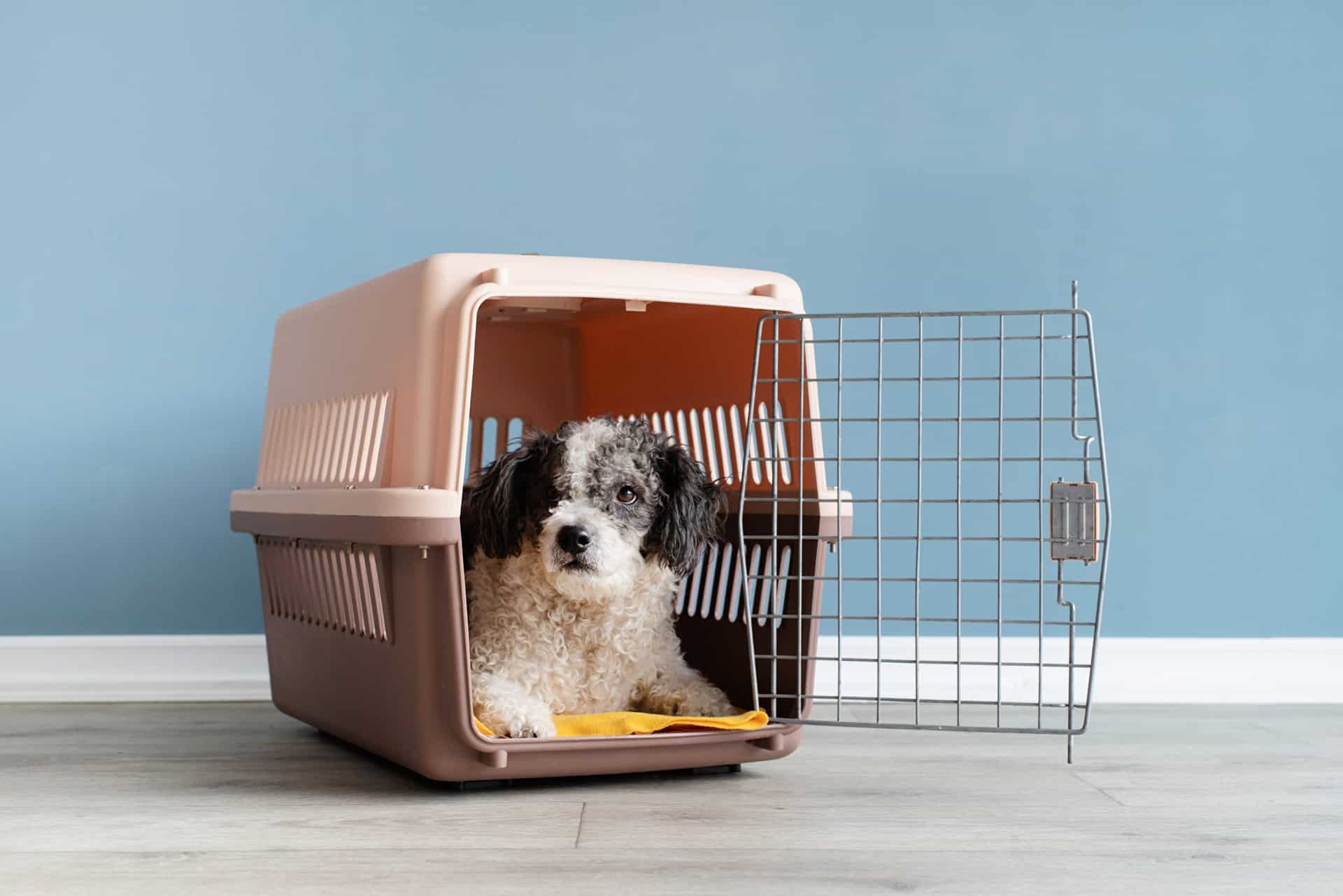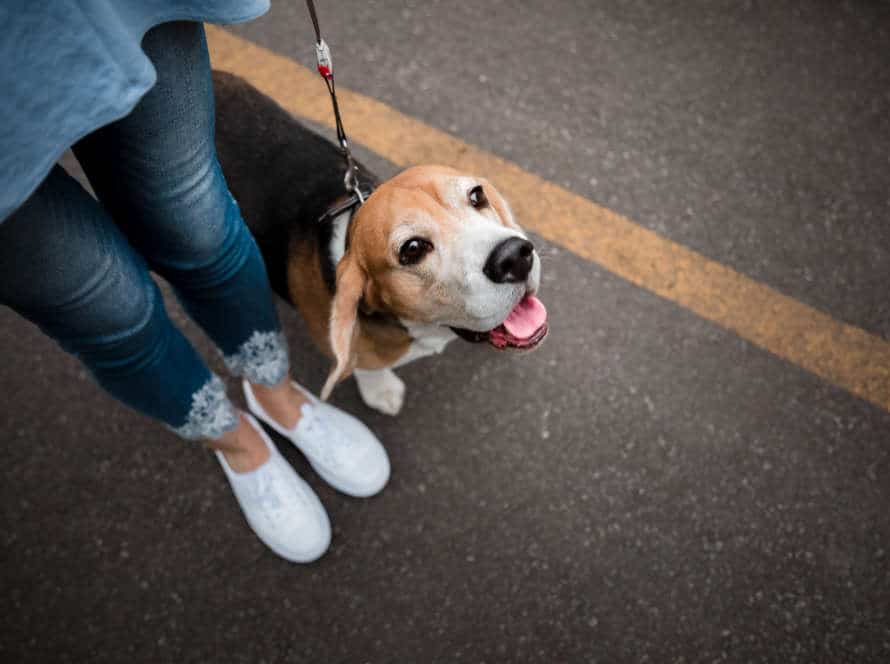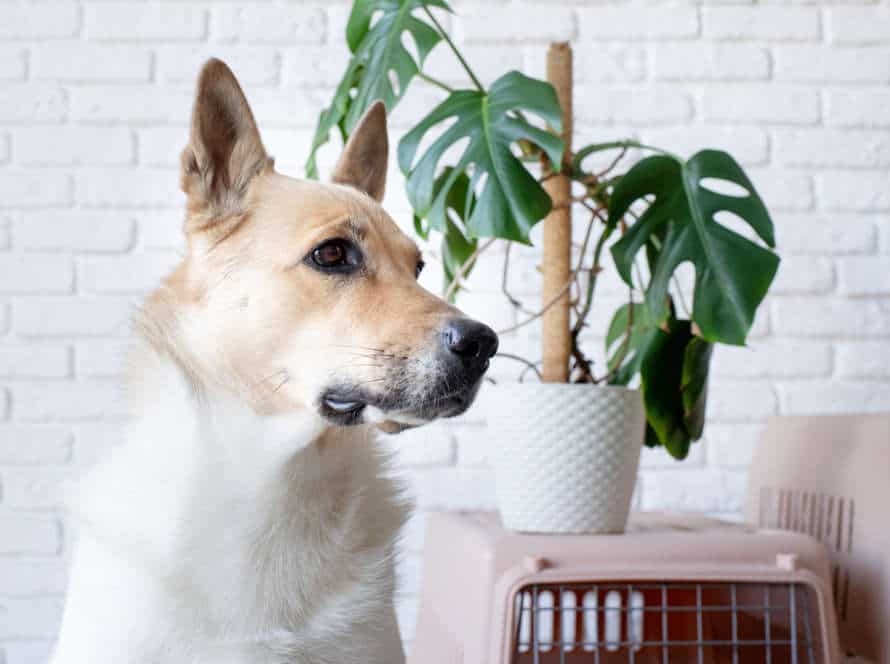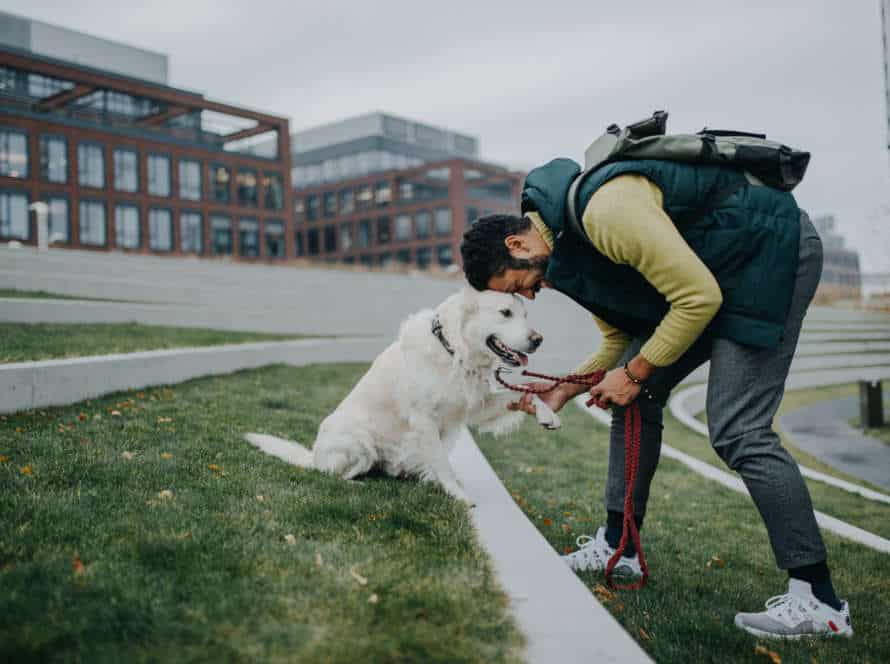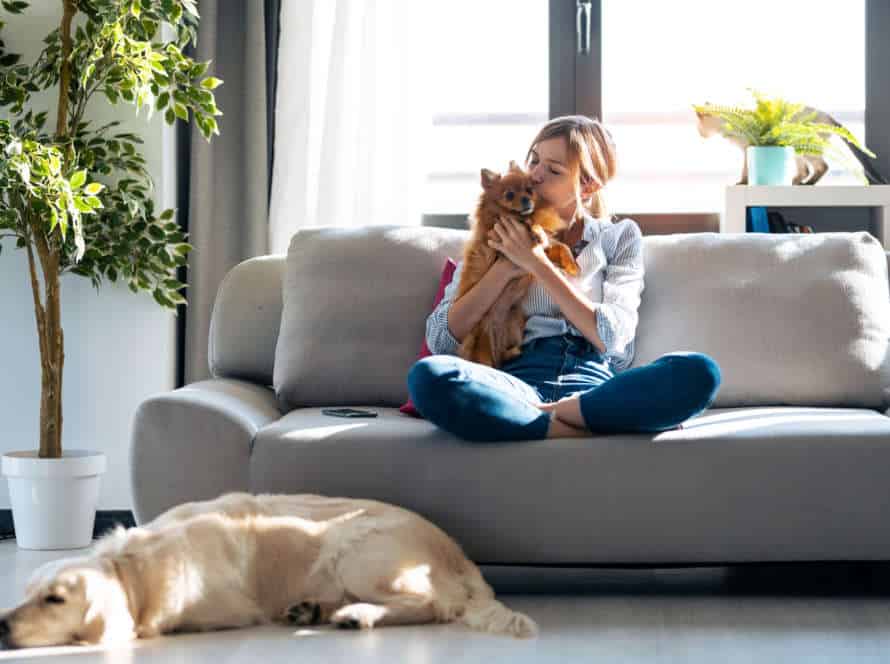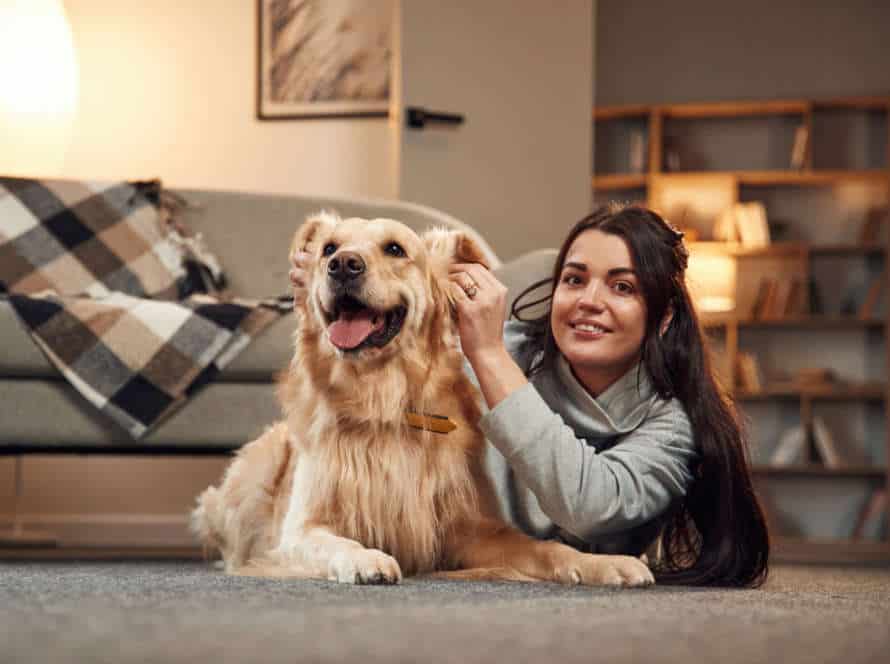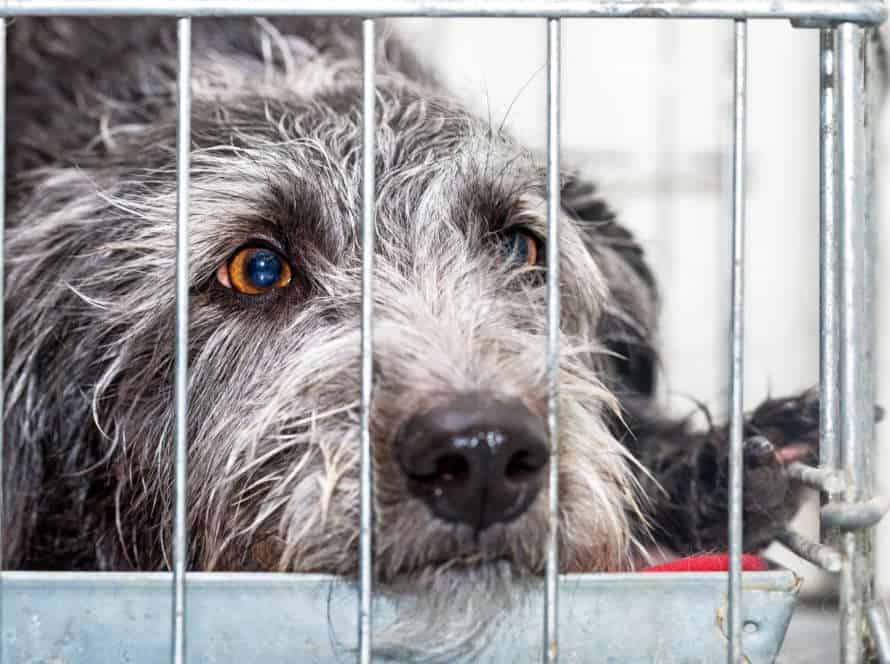How to Choose the Perfect Crate Size for Your Dog
Picking the right crate size for your pup is essential. Here’s how to get it just right:
- Measure their height from head to ground.
- Measure their length from nose to tail.
- Add two to four inches to both measurements. This’ll be the minimum size of the crate.
- Make sure they can stand, turn, and lie down comfortably.
- Check the weight of your dog and the weight limit of the crate. Make sure the crate can hold them.
- Remember, puppies grow up! Get a bigger crate as they age.
Follow these guidelines and you’ll find the perfect crate for your furry pal. They’ll have a comfy and safe spot all their own.
Understanding Crate Training
Crate training is a way to house train pups and adult dogs. It helps build borders, making it simpler to teach your pup appropriate house decorum. To use this method correctly, you need to know the basics of crate training. This includes knowing which crate size is right for your dog.
Benefits of crate training for your dog
Crate training is an awesome way to teach your pup good behavior and housebreak them. It’s a comfy and secure spot that can keep them out of trouble and help reduce your stress. Here’re some benefits of crate training:
- Housebreaking: A crate helps your doggo learn to hold their bladder until they’re let out.
- Safety: It protects them from household dangers.
- Reduced destructive behavior: Crate training can reduce chewing and damaging household items.
- Travel: It’s a safe place for them to ride in a car.
When picking the right size crate, make sure they can stand, turn and lay down comfortably. Don’t get one that’s too big, or they may potty at one end and sleep at the other. Pro Tip: Use positive reinforcement to make crate-time enjoyable!
Importance of choosing the right size crate
Choosing the correct crate size is really important for successful crate training and for your pet’s health. A small crate can cause anxiety, while a too big one can make the training pointless.
Here are some tips to pick the ideal size:
- Measure your pup’s height and length.
- Add 2-4 inches to both sizes.
- Think of their adult size if they’re still a pup.
- Pick a well-ventilated crate with enough room for them to stand, turn and lay down comfortably.
- A perfect-sized crate provides your pet with a secure and comfy space to call home.
Pro-tip: Get a crate with a divider panel so you can adjust it as your pup grows.
Measuring your Dog for the Crate
Getting the precise size of crate for your pup is essential. Not only should it be the right size to give your fur baby a comfy spot, but also not too tiny so he won’t feel caged in, or too big and he may go potty in it. To measure your pup, you’ll need a flexible tape measure and your pup’s height and length. Let’s get started!
Measuring the height and length of your dog
To get the right sized crate for your pup, you need to measure their height and length. Here is how:
- Height: Ask them to stand still on a flat surface with all four feet planted. Use a measuring tape from the floor to their shoulders.
- Length: Ask them to lay down and stretch out their legs. Measure from the tip of their nose to the base of their tail.
Add 2-4 inches to both the height and length for the optimal crate size for your pup. A good rule is to pick a crate that’s tall enough for them to stand and long enough for them to lie down comfortably in any position. Remember, the right size crate offers a safe space for them to relax.
Measuring the width of your dog
Measuring your pup’s width? Essential! It’ll help you pick the perfect crate size for them. To do that: get a ruler or tape measure. Make your pup stand facing forward. Measure their widest part (shoulders or hips). Add two to four inches to that. That’ll be the min width of their crate.
They should be able to stand, sit and turn easily. Size matters for their behaviour and mental health too! Pro Tip: If your pup is still growing, get a crate with a divider panel! Adjust size as needed.
Weight considerations for choosing the right crate
Choosing the right crate for your pup involves many factors. Your pup’s weight is essential. A too-small crate can be cramped, whereas a too-big one might cause anxiety. Measure your pup’s weight for a proper fit. Here are tips:
- Use a tape measure. Gauge your pup’s length from nose to tail. Then measure their height from floor to top of head/ears (whichever is taller). Lastly, weigh your pup and select a size that fits length, height and weight.
- Choose a size roomy enough for them to stand, turn and lie comfortably.
- Pro Tip – When in doubt, pick a larger crate for max comfort.
Choosing the Right Crate Type
Pick the right crate for your pup–think size, needs, and characteristics. You can find wire, plastic, and soft-sided crates. Each one has its upside and downside. Get a crate that provides enough space, comfort, and air flow. We’ll help you make the right size pick based on your dog’s size and needs!
Wire Crates
Wire crates are a great pick for pet owners ’cause of their strength, ventilation and convenience. But, it’s essential you pick the proper crate type and size for your pup’s comfort and security. Here’s some tips:
Type: Think about how you’ll use the crate. Could be for travel or training. Options could be collapsible, portable or heavy-duty wire crates.
Size: Measure your dog’s height and length. They should be able to stand and lie down comfortably. Also think of your pup’s weight and potential growth.
Features: Look for crates with features like secure latches, removable trays, and adjustable doors. Makes cleaning and transport easier.
Choosing the right wire crate type and size means your pup will have a safe and comfortable space all to themselves.
Plastic Dog Crates
Plastic dog crates are awesome! They are durable, affordable and easy to clean. But it’s vital to pick the right type/size for your pup’s comfort/safety.
Standard crates are perfect for everyday use and car travel. Airline-approved crates are ideal for flying. Soft-sided crates are lightweight and portable – great for crate-trained dogs.
When deciding the size, think breed/weight/height when sitting/standing. Also, they should have enough room to lay down/turn around but not too big so they don’t pee/poop.
Soft-Sided Dog Crates
Soft-sided dog crates are great for pet owners who travel or have limited space in their home. Before choosing one, take into account your pup’s size, behavior and personality. Here are some factors to consider when selecting the right size:
- Size and weight
- Enough room to stand, turn and stretch out comfortably
- Length of time pup will spend in the crate
- Level of activity and energy.
Once you determine the suitable size, it’s important to pick the right type. Some crates are for indoor use, others for outdoor activities such as camping, hiking and travel. Getting the right crate will make your pup’s experience comfortable and enjoyable.
Assembling the Crate
Once you’ve picked a crate that’ll be comfy for your pup, the next step is to put it together. Read the product instructions carefully and get the right tools. This’ll ensure your doggo is safe and sound in the crate. Let’s get assembling!
Proper safety precautions when setting up the crate
Assembling a crate for your pet requires certain safety measures.
- Firstly, pick the right size based on your dog’s measurements. They should be able to stand, turn around and lie down comfortably.
- Secondly, secure all screws and bolts and make sure there’s no sharp edges or protrusions.
- Also, put a soft cushion or blankets on the crate floor.
- Lastly, never leave your pup alone in the crate for too long. Make sure they have access to water and toys.
These safety measures will keep your furry friend safe and content in their crate.
Dos and Don’ts of crate assembly
Assembling a crate for your furry friend can be simple. Yet, certain ‘dos’ and ‘don’ts’ should be kept in mind. This ensures the crate is safe and comfortable for your pup.
Dos:
- Choose the right size crate for your dog based on its breed and weight.
- Assemble the crate in a ventilated area with enough space to work.
- Follow manufacturer instructions carefully.
- Secure all parts tightly.
- Cover the crate with a blanket or sheet, creating a cozy environment.
Don’ts:
- Don’t use a crate that is too small or too big.
- Don’t place the crate in an area with direct sunlight, heat, or moisture.
- Don’t leave your dog unattended in a crate for a long time.
- Don’t assemble the crate without proper tools.
- Don’t use a damaged or defective crate.
These dos and don’ts can ensure your pup’s crate is a comfortable and safe space. For them to rest and relax!
Introducing your Dog to the Crate
Introducing your pup to a crate is a great way to make them feel secure. It can also aid in house training and keeping them out of trouble when you’re not around. To be successful, you must select the right size for your pup. Let’s explore how to pick the perfect crate size.
The importance of making the crate comfortable for your dog
Creating a nice crate for your pup is essential for getting them to accept it and feel safe inside. Here are some tips:
- Get the right size crate. Your pup should be able to move around in it, stand up, and rest comfortably.
- Put a soft bed or blanket in the crate. This will make it more inviting and comfortable.
- Put the crate in a quiet spot. It should not be in a high-traffic area or somewhere noisy.
- Give your pup toys or chews. This will keep them entertained and stop any anxious or destructive behavior.
By making the crate nice, your pup will see it as a secure and cozy place instead of a place of punishment or discomfort.
Pro Tip: If your pup still isn’t getting used to the crate, try feeding them there or leaving something they know inside.
Crate training techniques
Crate training can help dogs feel secure. Here are techniques to introduce them to the crate and pick the perfect size:
- Introduce the crate gradually. Let them explore it in a happy environment.
- Treats and toys can entice them to enter the crate and stay there.
- Measure your dog from nose to tail, plus a few inches for movement. Find the right size crate.
- Make the crate comfy with bedding and toys.
- Use positive reinforcement to encourage them to use the crate. Never force them.
With patience, consistency and positive reinforcement, your dog will learn to love their crate as a safe, secure space!
Benefits of using positive reinforcement
Positive reinforcement is a training method that rewards good deeds instead of punishing naughty ones. Here are some advantages of using positive reinforcement when teaching your pup to use a crate, and when picking the right size:
- Builds mutual trust: Positive reinforcement helps build trust between you and your doggie, creating a positive and caring atmosphere when they use the crate.
- Decreases Anxiety & Stress: Positive reinforcement helps reduce tension and stress in dogs when they’re getting used to a new situation, like crate training.
- Improves Behaviour: Positive reinforcement training can quickly improve your pup’s behaviour and obedience. Especially when introducing them to new and uncertain situations like crate training.
When selecting the perfect crate size, positive reinforcement can help your pup understand that the crate is connected with positive rewards from their owner. Pro-tip: Always supervise your pup’s initial crate training sessions for their wellbeing, comfort and to build trust.
Conclusion
Choosing the ideal crate size for your pup can be tricky. But take breed, size, age and temperament into account, and it’s easy! Making the correct decision is essential for providing your pup with a comfortable, safe environment. So, give it some serious thought!
Recap of the importance of choosing the right crate size
Finally, it’s key to choose the right crate size for your dog. Here is a reminder of why:
- A small crate can cause unease, fear, and even harm.
- If the crate is too big, your dog might use one side as a loo and the other as a bed.
- The proper size will allow your pup to stand, move around, and lie down comfortably, with some room to stretch.
By adhering to these tips, you can make sure your pup has a happy and relaxed experience with the crate, no matter whether they’re at home or away with you.
Last-minute tips for crate training success
Crate training is a great way to house train your furry pal. To ensure success, pick the perfect size crate. Here are some tips for success:
- Introduce the crate gradually with rewards.
- Put it in a calm, cozy spot.
- The crate should be big enough for your pooch to stand, turn, and lie down.
- Offer nice bedding and toys to make it inviting.
Using these last-minute tips, your furry friend will soon love their crate as a secure place to call home.
Frequently Asked Questions
1. What are the factors to consider when choosing a crate for my dog?
The size of your dog, their breed, and their age are the most important factors to consider. You should also consider their individual habits and tendencies.
2. Should I choose a crate that is larger than my dog?
No, your dog’s crate should not be significantly larger than your dog. It’s important that the crate is big enough for them to stand up and turn around, but not so big that they have enough space to use one end as a bathroom and the other end as a sleeping area.
3. What if my dog is still growing?
If your dog is still growing, it’s best to choose a crate that will fit their current size and then upgrade to a larger one as they grow.
4. How do I measure my dog for a crate?
To measure your dog for a crate, measure their length from the tip of their nose to the base of their tail, and their height from the floor to the highest point on their shoulders. Add a few inches to both measurements to ensure that they will have enough room to stand up and turn around.
5. Can I use a soft-sided crate for my dog?
Soft-sided crates can be a great option for small or calm dogs, but they may not be sturdy enough for larger or active dogs. Make sure any soft-sided crate you choose is well-made and can stand up to your dog’s activity level.
6. What if I’m not sure what size crate to choose?
If you’re unsure what size crate to choose, ask your veterinarian or a professional dog trainer for advice. They can help you determine the appropriate size for your dog.

